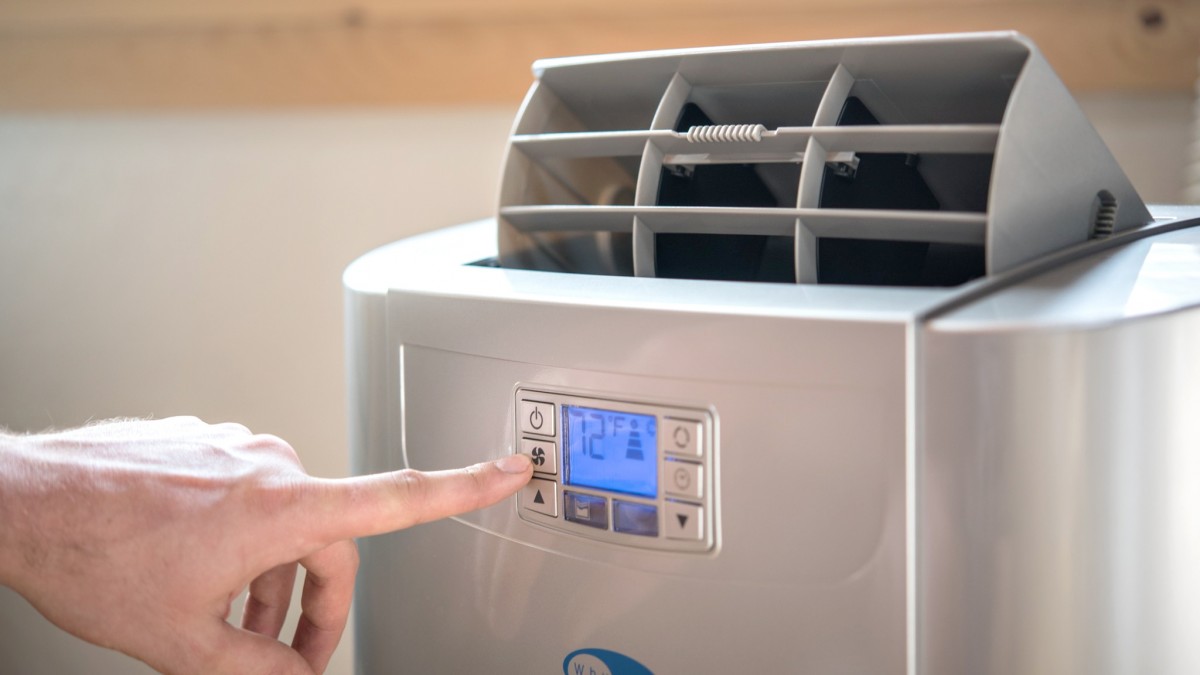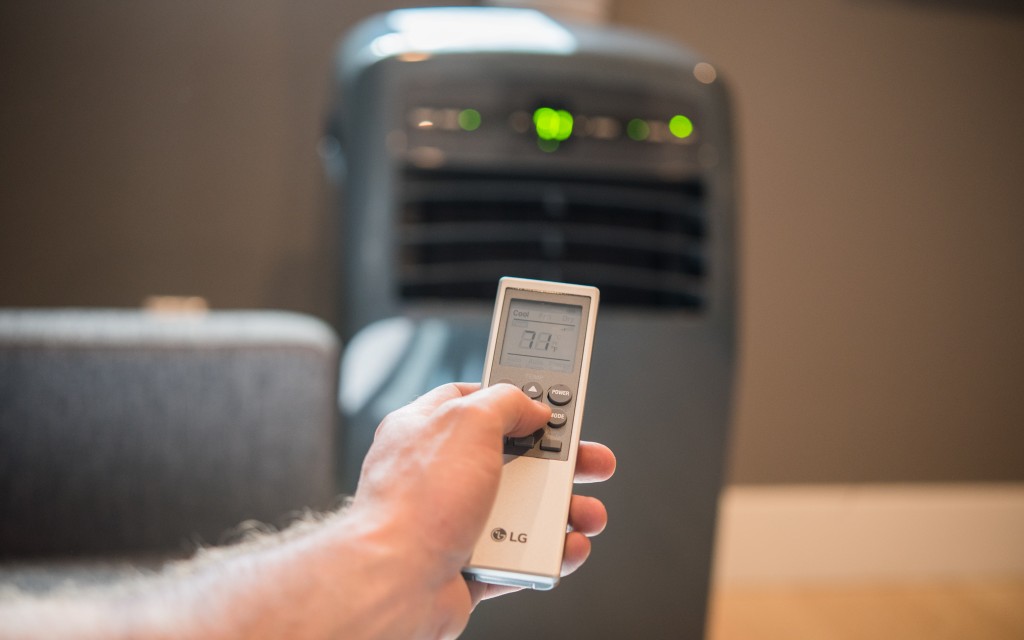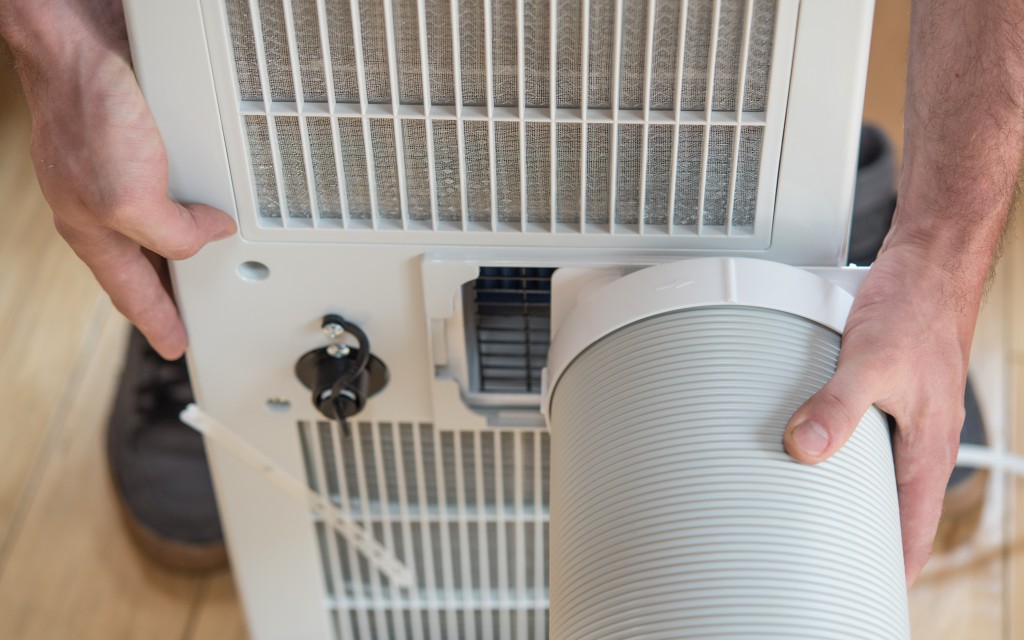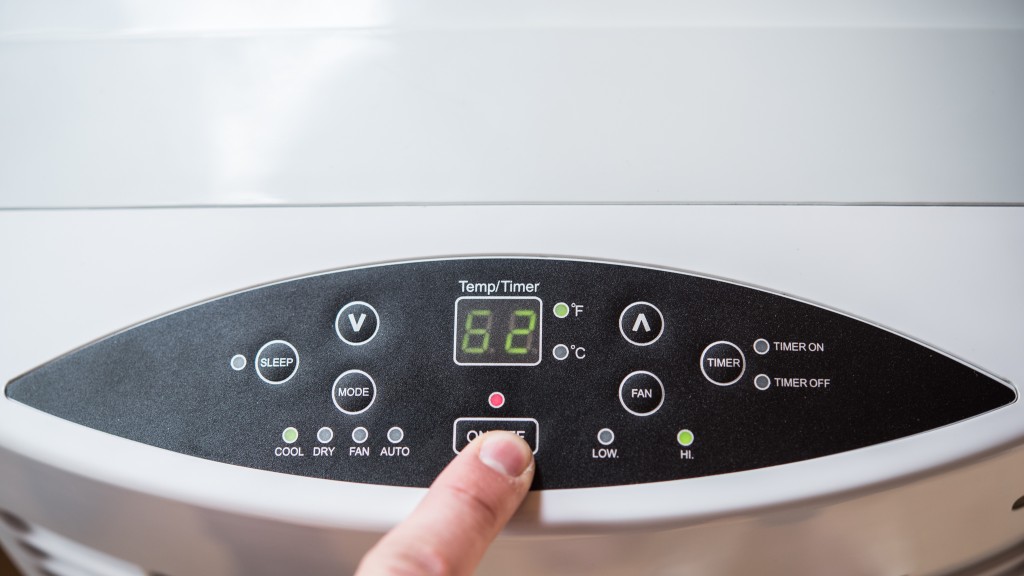Are you tired of sweaty and sleepless nights, or perhaps you're stuck in an inexplicably warm office? In truly sweltering temps, even the best fan won't cut it. A top-rated portable air conditioner might be just the ticket to sweet relief. Though it may seem like a simple home appliance, not all units are created equally. We tested the top units on the market to find the best ones. In this buying advice article, we will dive into the different types of AC units and what key features to look for before you make your next purchase.
Step 1: What Types of AC System Do You Need?
The most common types of AC units are central, freestanding portable, window, and built-in units. Below we will detail the pros and cons of each but note that our review centers around freestanding portable models.
Central
Central AC systems are probably the most efficient, the most discreet, and the easiest to operate, but these systems are very expensive on their own, usually coupled with the costs associated with hiring a contractor to install them — anywhere from $2000-$10000. Additionally, installing a central system on an existing building is almost impossible without undergoing a major remodel, so these systems are essentially out of the question if you want to cool a few rooms in the hottest summer months.
Built-In
Built-in units are the next most complicated to have installed and are best suited for places where you know there will be a high demand for AC for a good portion of the year, but you don't want to shell out the money for a central AC system. Alternatively, these units are a good option if you already have central AC in your main house and want to permanently add AC to a separate structure, like a guest house or detached garage.
The installation of these units usually requires cutting a hole through an exterior wall, so most people may want to consider having a professional install them, though some expert DIYers might be able to pull it off successfully. These units range from $500-$1500, depending on the size and cooling power. These models do not take up any valuable floor space or obstruct a window view, making them a good option for a discreet install.
Window Unit
Window units are a great option if you don't want to hire a professional to install them or you are in rental and can't make permanent structural changes. These units are made for either horizontal or vertical sliding windows and will have an accordion panel to fill in the remaining space. These units usually cost somewhere in the neighborhood of $300 and can usually be installed in less than an hour. They tend to be slightly more efficient than freestanding models, as the hot side of the compressor is outside the building, so no energy is required to evacuate the heat from inside the room. These units can require a support bracket to hold up larger models, but some buildings have regulations against them. Additionally, you basically lose the use of a window, as the unit will obstruct most of the view and make it so you can no longer open it for ventilation.
Portable ACs
Finally, we get to freestanding portable air conditioners. These units are the focus of our review, as they can be installed in practically any home without any issue. These units are great when you want the option of having air conditioning for the hottest summer months or during a heatwave but want to easily stow them during the winter. These units come in both a single hose and dual-hose variety, and either will require a window insert or a hole cut in a wall for the exhaust hose, with the majority of people opting for the former.
These units cost anywhere from $300-$700 and all have casters on their main base. These are handy, as they allow you to move these units room to room if desired. They aren't the easiest to move — weighing 50-80 lbs. — and take 15-30 minutes to set up, so you aren't going to bring it with you every time you change rooms, as you might with a small space heater, but if necessary they can be moved without too much effort. The window insert is barely noticeable from the exterior, making it much easier to comply with any HOA rules or any other codes governing the exterior appearance of your home. Now that you have an idea about which type of AC to get, it's time to look at how large of an AC you need. The remainder of this guide should apply to both window or freestanding units, but you should probably consult a professional if you are considering central or built-in units.
Step 2: How Many BTUs?
The first thing you will notice when comparing different models is they will have either a BTU or room size rating — usually both. BTUs, or British Thermal Units, are a measure of power or, in terms of air conditioners, essentially how well each of these units can cool a room or how much heat they can extract. The first step in picking the correct BTU rating is figuring out the square footage of the room or rooms you are trying to cool. This can be pretty rough, so don't stress too much if you have an oddly shaped room and the calculations become complicated. A good rule of thumb is an 8,000 BTU room is good for a 200 square foot room, 10,000 BTU is good for 300 square feet, 12,000 BTU for 400 square feet, and 14,000 square feet. For reference, standard bedrooms are usually 100-200 square feet, master bedrooms are 150-300, living rooms, and kitchens, and dining areas are usually 300-400 square feet.
Additionally, you will want to increase the BTU ratings if there are any significant sources of heat in the room. If the room gets copious amounts of sunlight, you should increase the BTU rating by 10-15%. If you are getting a unit for your kitchen, you should add between 400-600 BTUs to compensate for all of the appliances that generate heat, such as the oven or toaster oven. Finally, if lots of people typically congregate in the room you wish to cool, you should add 300-600 BTUs for each person over two — the first two people are usually included in the above estimate for BTUs based on room size. However, if you are planning on installing a window unit, these are a bit more efficient, and you can deduct between 1500 and 2000 BTU from the estimate for a portable air conditioner.
Step 3: Single or Dual-Hose?
Now that you have a good idea of what BTU rating you need, you should look at the hose configurations of the models with that BTU rating. This only applies to portable air conditioners, as window units don't have hoses. First, you may be wondering what the difference between these two types actually is, so some quick background on how ACs actually work.
These appliances don't actually make cold air; they transfer heat from the room outside. They do this through a combination of a compressor and some set of heat exchangers, to create a hot and cold side of the exchanger. Hot air from the room is passed over the cold side of the compressor, transferring its heat to the compressor. The compressor keeps this heat transferring from the cold side of the exchanger to the warm, but this can only continue if there is some way of moving this heat from the warm side of the heat exchanger to outside the building, which is where the key difference between single and dual-hose models appear.
Single hose models use air from inside the room to cool the hot side of the heat exchanger and exhaust outside. This can create negative pressure in the room with a single hose model, so it will end up drawing in hot air from the rest of the house. This can cause them to bog down in the hottest climates, as the AC can't keep up with the hot air from the rest of the house it keeps drawing in. This means they are also less efficient, as they are using some of the air you have spent energy — and money — cooling and exhausting it outside. However, they are easier to set up and are less visually intrusive than dual-hose models.
Dual-hose models have both an inlet and outlet duct connected to the outside, so they actually draw in outside air and blow it across the heat exchanger to cool it, then vent it outside. This keeps the pressure in the room essentially the same and makes them much more suitable for the hottest climates. In short, if it is routinely in the triple-digit temperatures, you probably should restrict your search to dual-hose models.
Step 4: Additional Features?
Finally, the last thing to consider when you are making your final selection is if there are any additional features that would be beneficial. Some of these units have built-in heaters or dehumidifiers, so this may be something to consider if you want an all-in-one unit, rather than purchasing a separate space heater for the colder months or a standalone dehumidifier for when it is especially hot and muggy out.
Pairing your air conditioner with a top-ranked air purifier can help lock in your air quality game.
Conclusion
At this point, you should be ready to find the perfect air conditioning solution for your home. If you are interested in portable air conditioners, head on over to our review of the best portable air conditioners.











